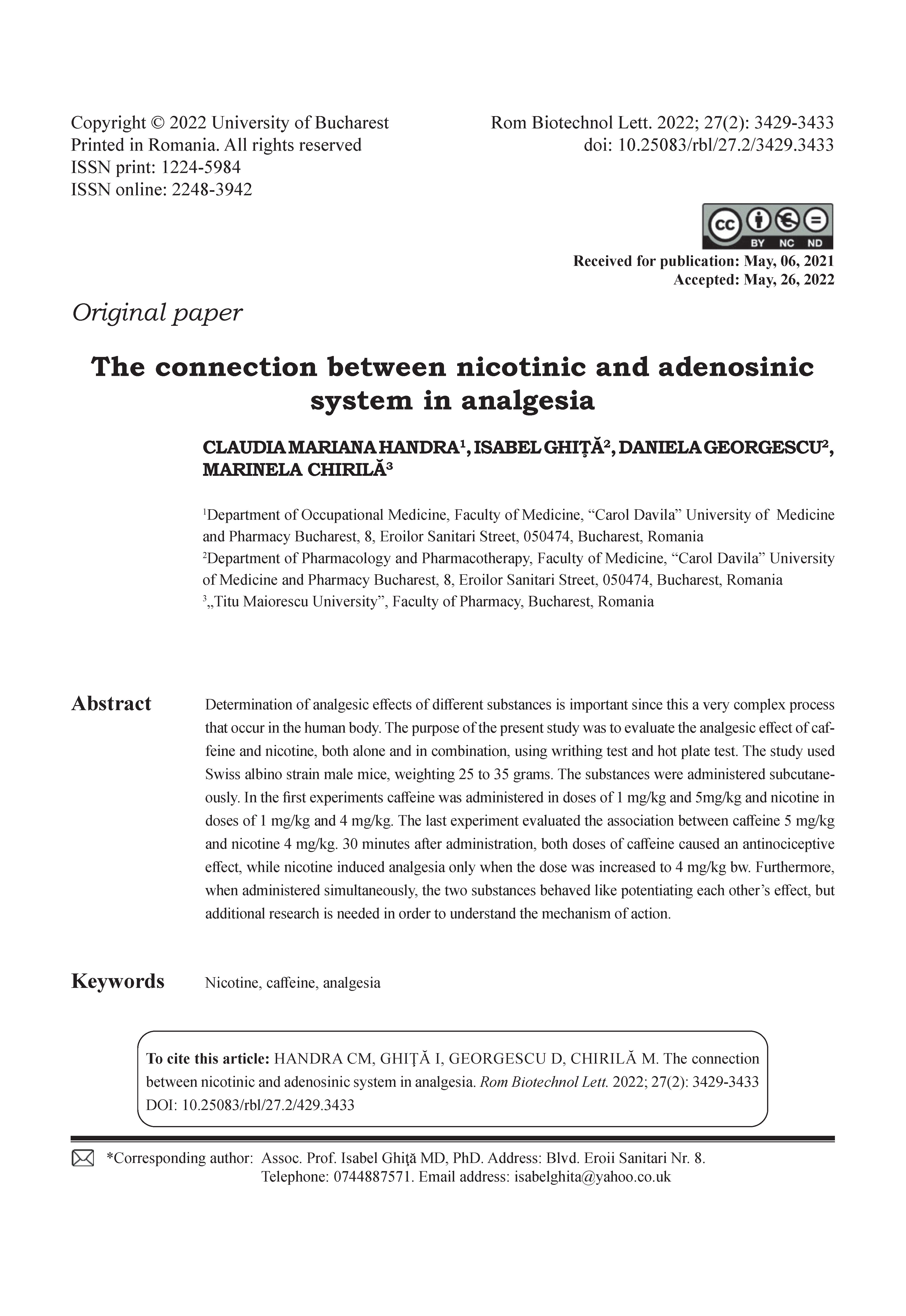The connection between nicotinic and adenosinic system in analgesia
DOI:
https://doi.org/10.25083/rbl/27.2/3429.3433Keywords:
Nicotine, caffeine, analgesiaAbstract
Determination of analgesic effects of different substances is important since this a very complex process that occur in the human body. The purpose of the present study was to evaluate the analgesic effect of caffeine and nicotine, both alone and in combination, using writhing test and hot plate test. The study used Swiss albino strain male mice, weighting 25 to 35 grams. The substances were administered subcutaneously. In the first experiments caffeine was administered in doses of 1 mg/kg and 5mg/kg and nicotine in doses of 1 mg/kg and 4 mg/kg. The last experiment evaluated the association between caffeine 5 mg/kg and nicotine 4 mg/kg. 30 minutes after administration, both doses of caffeine caused an antinociceptive effect, while nicotine induced analgesia only when the dose was increased to 4 mg/kg bw. Furthermore, when administered simultaneously, the two substances behaved like potentiating each other’s effect, but additional research is needed in order to understand the mechanism of action.





